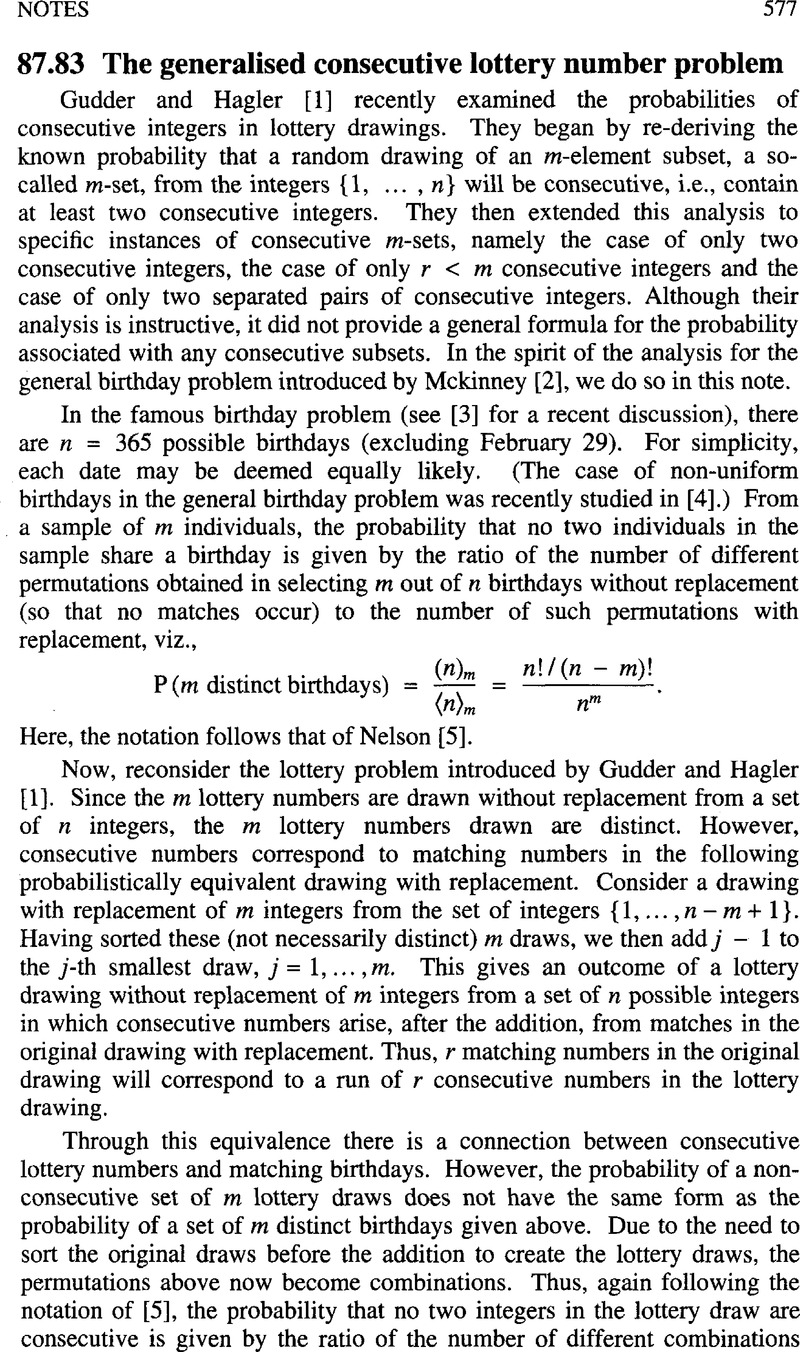No CrossRef data available.
Article contents
87.83 The generalised consecutive lottery number problem
Published online by Cambridge University Press: 01 August 2016
Abstract
An abstract is not available for this content so a preview has been provided. Please use the Get access link above for information on how to access this content.

- Type
- Notes
- Information
- Copyright
- Copyright © The Mathematical Association 2003
References
1.
Gudder, S.P. and Hagler, J.N., Probabilities of consecutive integers in lotto, Mathematics Magazine
74(3) (2001) pp. 216–222.CrossRefGoogle Scholar
2.
Mckinney, E.H., Generalized birthday problem, American Mathematical Monthly
73(4) (1966) pp. 385–387.Google Scholar
3.
Rapoport, A.H., Birthday problems-a search for elementary solutions, Math. Gaz. 82 (March 1998) pp. 111–114.Google Scholar
4.
Hoist, L., The general birthday problem, Random structures and algorithms
6(2–3) (1995) pp. 201–208.Google Scholar
5.
Nelson, R., Probability, stochastic processes, and queueing theory, Springer-Verlag (1995).Google Scholar
8. Website of the New York State Pick-10 lottery results: http:// www.nylottery.org/winner/picklOres.php
Google Scholar




